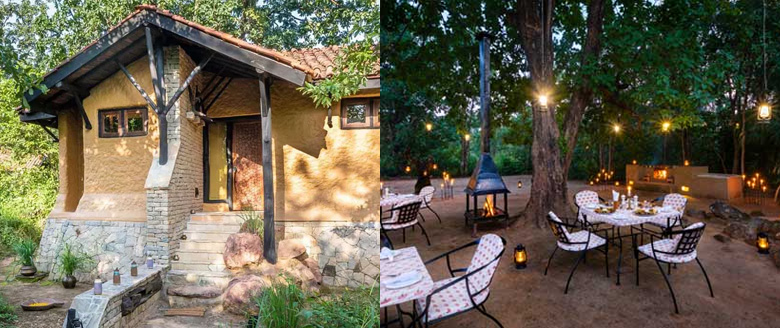These lowland forests are a mixture of great sal hardwood trees, once heavily felled for railways sleepers and other mixed species of forest. It is interspersed with grassy meadows – the habitat of spotted deer, the rare hard ground barasingha and ambush ground for the tiger. The higher forests are more tropical with bamboo growing in clusters within which gaur, wild pig, sloth bear and sambar deer make their homes. With all this prey, tigers are numerous too (over 100 at last count) and habituated to jeeps, ensuring memorable sightings. The Reserve lies in the east of the Central Indian highlands of the ancient Satpura mountain range. Here, flat-topped hills support grassy meadows and the river Sulkum flows through the valley. The Banjaar and Halon valleys used to be hunting grounds of the British who would hunt the barasingha deer but their rapid decline in numbers forced the authorities to gazette Kanha as a Sanctuary in 1933. In 1955, a 250 square kilometre patch of land was declared the Kanha National Park. The Mukki Valley was added to the Protected Area in 1970 and then, thanks to Project Tiger, a vital part of the upper Halon Valley was also included. Today it stretches over an area of 940 square kilometres with a surrounding buffer zone of 1,134 square kilometres. Along with the neighbouring Phen Sanctuary, it forms the Kanha Tiger Reserve.







